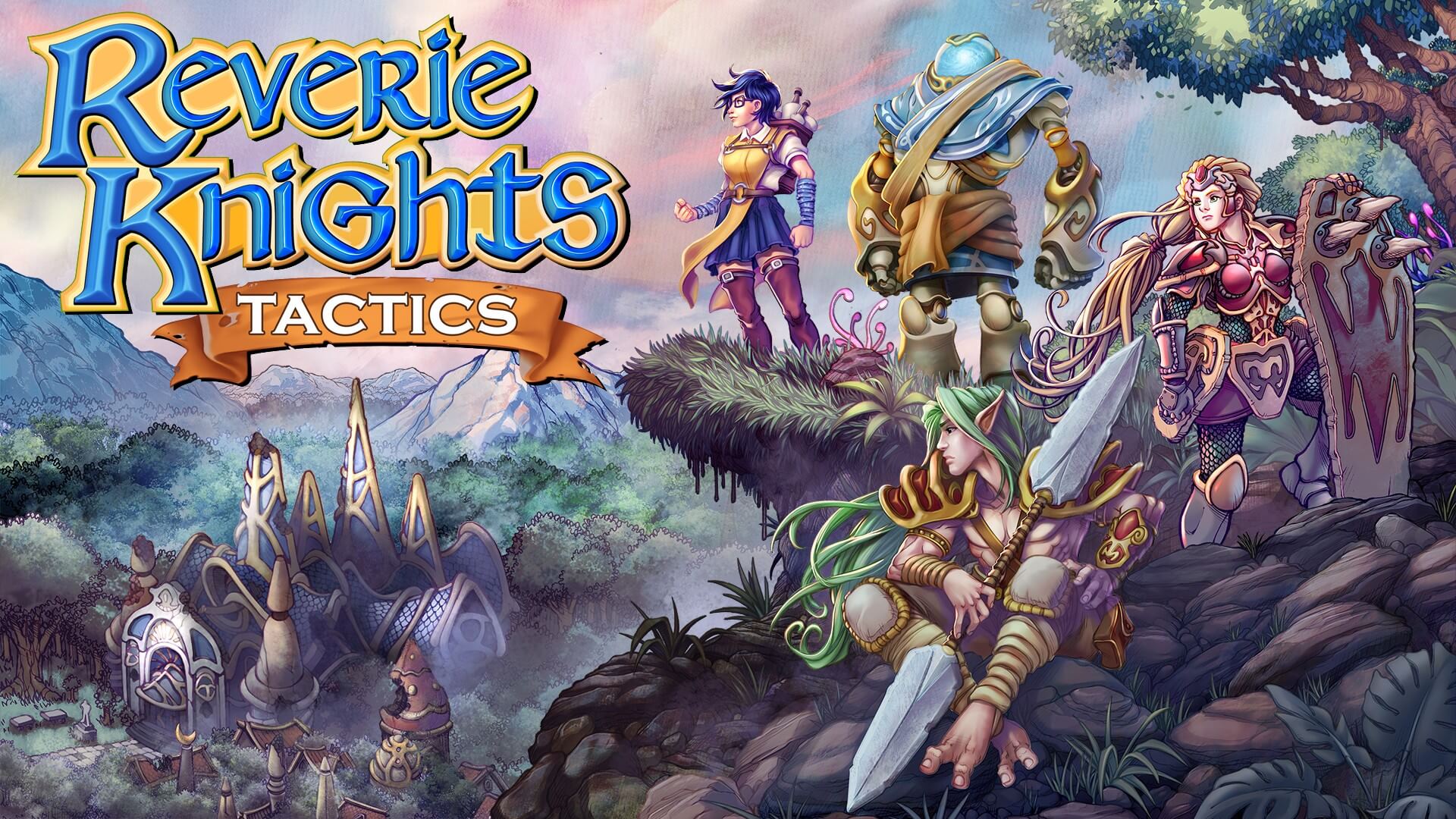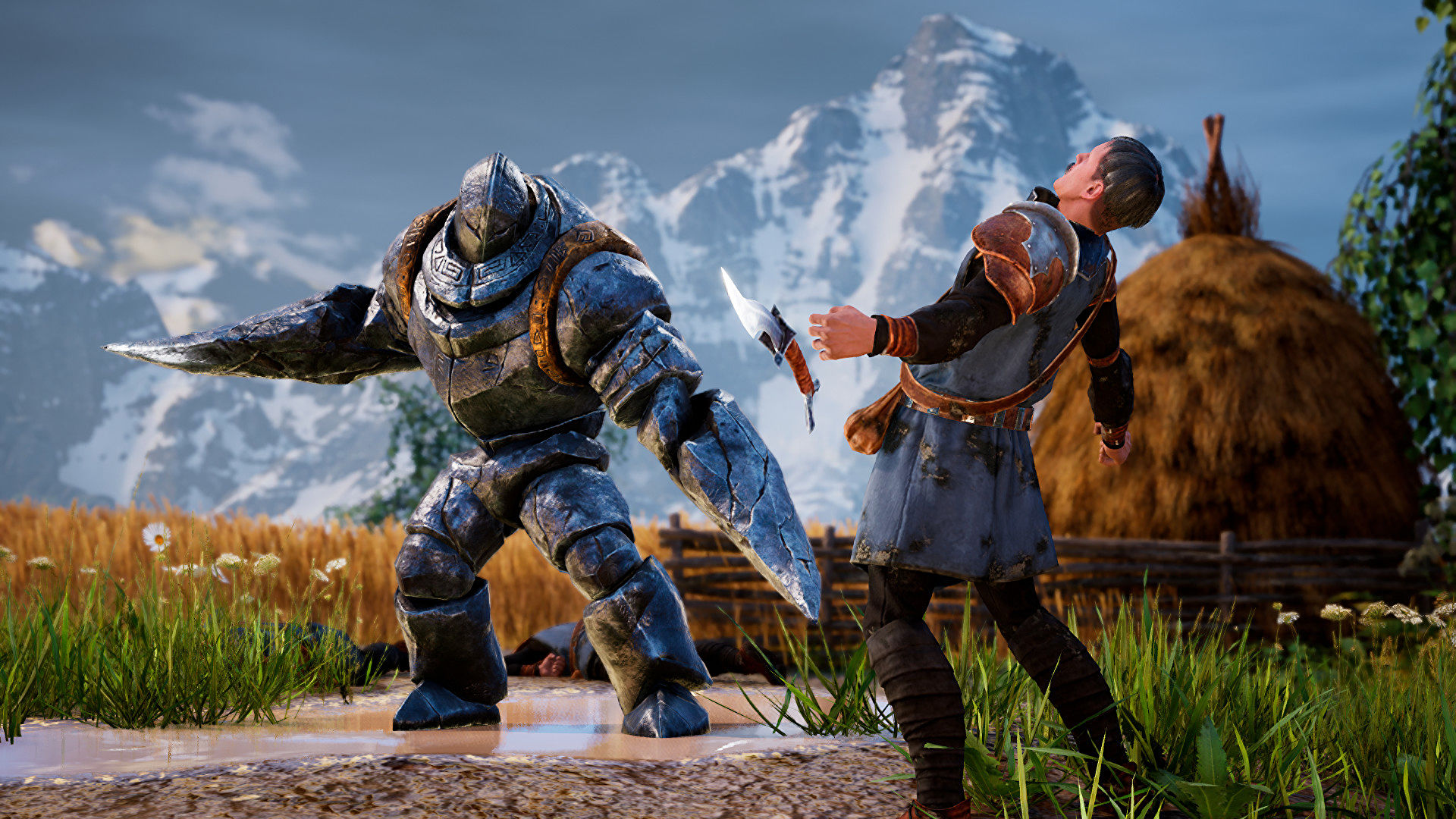Reverie Knights Tactics Review (Xbox One) – Fanciful Daydreaming
An enticing, hand-drawn and turn-based strategy title with moral decisions to make, Reverie Knights Tactics has a lot to offer, but does it match those fantasy ambitions? The Finger Guns Review.
Here’s a question for you, dear reader. Did you have any clue what reverie meant when reading the title? If so, you’re a smarter human than I. Anyway, if you don’t know, it means to be in an ethereal, dreamlike state, or to be pleasantly lost in one’s own thoughts. You’re welcome (thanks Google Dictionary). Aside from learning the meaning of new words, Reverie Knights delivered more than just an English lesson. It’s also a fine video game, one that lives up to the mantle of a passage into joyful daydreaming.
Bolstering the roster of turn-based strategy RPGs, Reverie Knights released a prologue version of its first hour in July 2021 which was met with some mixed responses. The final product, while not perfect nor the pinnacle of the genre, has a lot going for it. I thoroughly enjoyed my time strategizing through its puzzle-like battles, even if some of the systems were a bit light.
Embrace The Dream
Embarking on your fantasy quest, you’ll be taking on the role of Aurora. Prominent bookworm and would-be hero that she is, Aurora is tasked with travelling to a kingdom engulfed in conflict between Elves and Hobgoblins. Setting out on her expedition, she also has a personal stake in the mission – her father and friends who had originally set out there haven’t been heard from, so the stakes are apparent from the off.
Over the course of your roughly 8-10 hour journey, you’ll be introduced to a variety of characters in the shape of your party and fellow travelling companions. Brigandine, a stoic-yet-fearful warrior who loves nothing more than to eat. Fren, a hot-headed, contemptuous and yet empathetic Elf, and one more whom I won’t spoil. In your camp, there are a handful of others who will gradually join the ranks, whether it be the chef to craft healing items, a pirate captain who opens the options of bombs, and Bharratt, who we’ll return to later.
The story itself is fairly straightforward, with the opening hour setting up the context of the war and the world. Characters are quickly introduced and most will have obvious traits that don’t shift too drastically as the story progresses. On the way you’ll pick various dialogue and choice options, some with no repercussions and others falling into the morality system. Each decision stacks into either chaos (red, naturally) or order (blue). Your decisions will determine how characters react towards you, how particular scenes will play out and even the game’s ending.
You’re not told which choice aligns with chaos or order, but it’s very easy to perceive and you’re encouraged to stick with one side or the other throughout, which did at times undermine the actual choice I would have made. The changes to dialogue and scenes are relatively minor, but it did provide a pleasing sense of autonomy over the type of adventurer I wished to shape Aurora into. There were occasional decent pay-offs too which had me intrigued as to how a more chaotic Aurora would have experienced the game’s events.
While some story beats and dialogue can be a little too much on the corny side, I appreciated the effort that had gone in to trying to flesh out these otherwise one-dimensional characters. Occasional awkward interactions aside, the writing is decent and the choice system did provide some agency into would have otherwise been a standard affair. It’s not going to win awards, but I was invested enough to pay attention to the end.
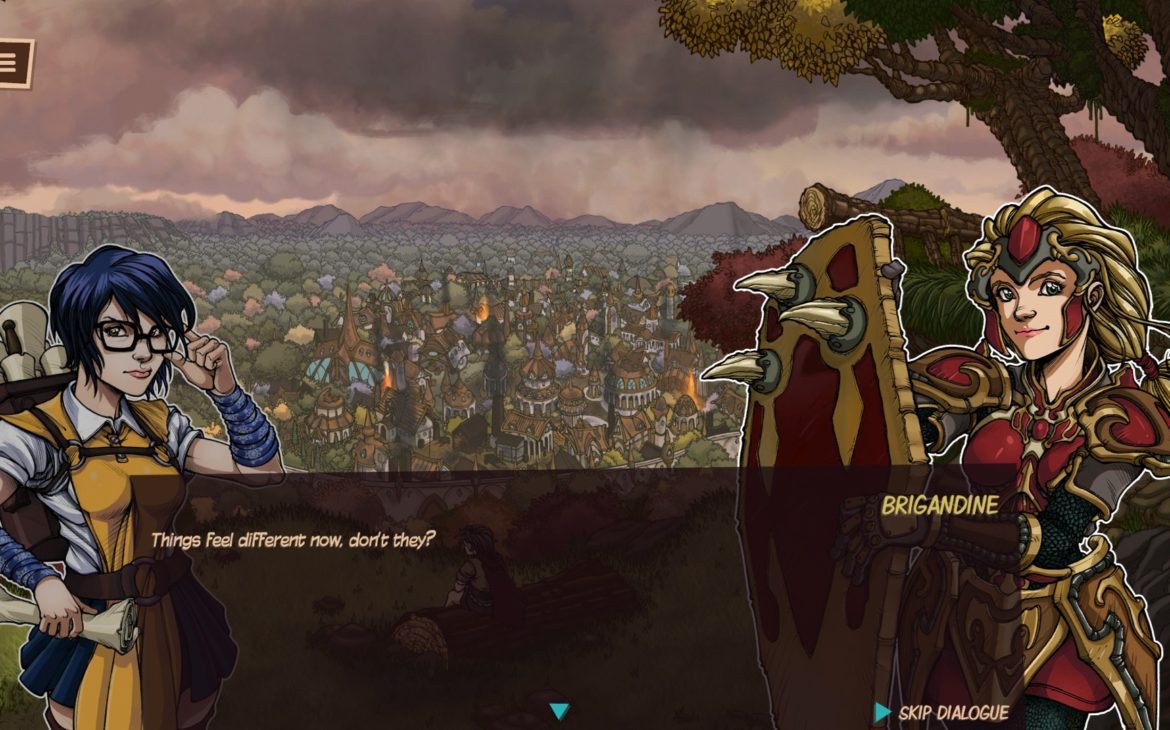
Handcrafted With Care… Mostly
Reverie Knights Tactics boasts of having beautifully hand-drawn art throughout and for the most part, it lives up to this. Relying on highly contrasted and deep colours, you’ll find yourself drawn in to its world and all its splendor pretty frequently. Character and enemy designs are creative and detailed, while some of the more bombastic spells and team attacks are lethally invigorating.
The world map you traverse around can look a bit too basic though, as the way you move from area to area on a static backdrop can feel distinctly mobile-like. Some animations aren’t quite as crisp or smooth as the overall art style which is also a shame, as it sticks out considerably against such aesthetically pleasing levels. It’s a strangely mixed bag, as there’s some really great art direction and creativity within the visuals, but it does feel like some corners were cut in places which undermine the overall look.
With a small smattering of locales you’ll travel to and differing battle layouts, you’ll usually have something new to appreciate. Cave areas and interiors of buildings did become repetitious after a few fights, but luckily Reverie Knights tends to move on before stagnation kicks in fully.
It’s worth noting too that a number of environments will have interactable items and objects to obtain. It’s probably not worth the time it takes to scour over each area with the cursor, but it does provide a tangible benefit for being thorough and willing to take your time. Plus, it encourages you to appreciate the finer details the concept artists toiled over, which is nice.

Pick Your Battles
Being turn-based and utilising isometric grids, Reverie Knights should feel right at home to anyone who’s played a tactics game before. Your party each has individual action points which are expended when moving, attacking, casting or consuming items. As is the way in these titles, you must carefully strategise how and when to attack or defend, as well as maximise your damage output on your enemies. There’s a decent amount to take in at first, whether it be using environmental hazards to your advantage or realising when to use those powerful yet mana-intensive abilities.
Positioning is key to prevent ambushes and the all-powerful backstab attacks. Luckily, you’ll always have options in each fight, whether it be knocking a foe off a broken bridge, pushing them onto an arcane debuff tile or my personal favourite – smacking a thorn bush to punish four foolish opponents at once. Playing on normal means your health and mana don’t recover after each fight, creating interesting dilemmas of whether to gather resources in the fighting arena and recover before ending a battle, or taking your chances into the next skirmish.
Which works really well in the opening hours, where resources, powerful abilities and your party are lacking or diminished. At one point I feared not even being able to progress as I’d wastefully demolished all my healing items and had a flagging party of disheveled heroes. It all changed after the halfway mark, where I discovered how teleporting abilities could effectively eradicate foes if used intelligently and through outfitting my characters with resistance and healing buffs, effectively removing any real threat of failure.
It was a strange contradiction – as the game was supposed to be getting harder, I was effectively able to stockpile resources and in the last few fights I could just brute force my way through using my abundance of overpowered items. The battle system encourages you to surround enemies for team attacks and to consider using abilities with debuffs and various other effects. In the end though, I’d found a system with my characters whereby I was constantly healing, restricting enemy movements consistently and could deflect most attacks.
I wasn’t particularly encouraged to try other methods or to switch up my tactics after the halfway mark, as my strategies seemed to be full-proof no matter the scenario I faced. It didn’t derail the experience, but it demonstrated that the battle system didn’t quite have the depth to challenge you after the initial issues with learning enemy types, scarcity of abilities and lack of available tactics.
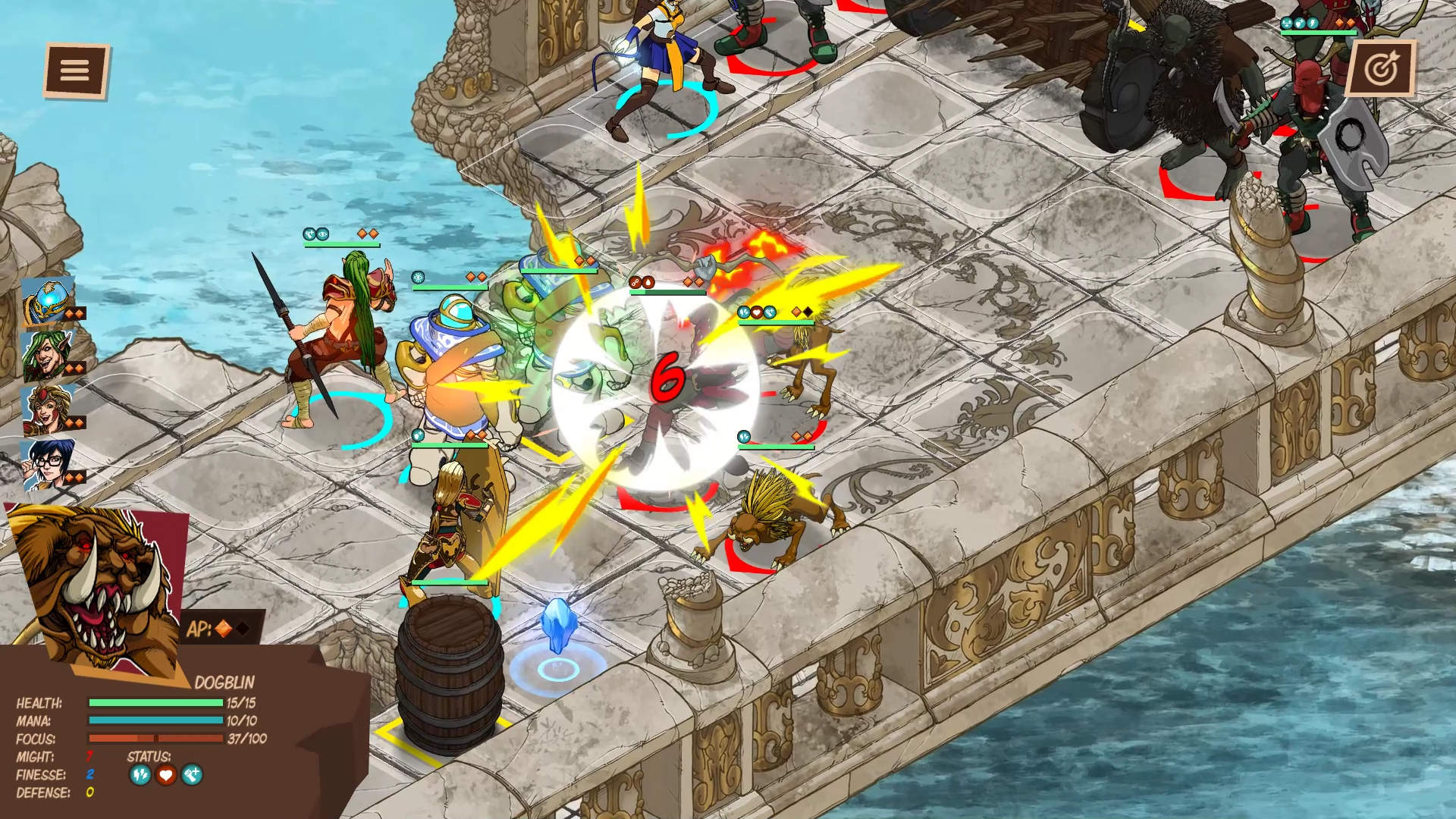
Bottle Your Progression
What was more apparent from the early stages was the lack of a substantial progression and customisation pathway. In the majority of RPGs, particularly turn-based, your set up of each character’s abilities and equipment is paramount for success. Most usually require a lot of tinkering to develop synergies as you level up to face new threats.
Reverie Knights Tactics has a serviceable platform towards this but it’s once again lacking that extra layer of depth to encourage experimentation or build differentiation. Each character levels up individually, which grants you a point you can put towards Might (damage output), Finesse (critical/glance chance) and Defence (resistance and damage reduction). In truth, each upgrade felt little more than a slight modifier increase. As my heroes grew their stockpile and gained better gear, I focused purely on Might to end battles more efficiently, almost negating a more serious decision-making process.
You’ll further gain new alternative skills, spells and abilities while levelling up. Interestingly, some are tied to your chaos and order rank, offering unique options based on how you’ve morally allied yourself. Some of the later abilities are obscenely powerful and genuinely enhance the sense of your own threat which is great. The majority though, I had no need to utilise as my tried-and-tested set ups had worked so effectively before. I tried a couple of variations but they were generally less useful and again, the game rarely forces you into having to adapt.
This is also the point that Bharratt becomes important. See, your resident goblin looking wealth of knowledge is available at your camp to decipher tomes using a currency called cogni you earn from battles. Each character can equip up to 3 tomes and the more expensive the tome, the better the effects. Tomes have a bit more utility, as you can compensate for lower levels of stats, gain increased health and mana or even make your hero immune from debilitating status effects. You earn cogni at a decent rate so this element felt pretty well balanced and worth engaging with.
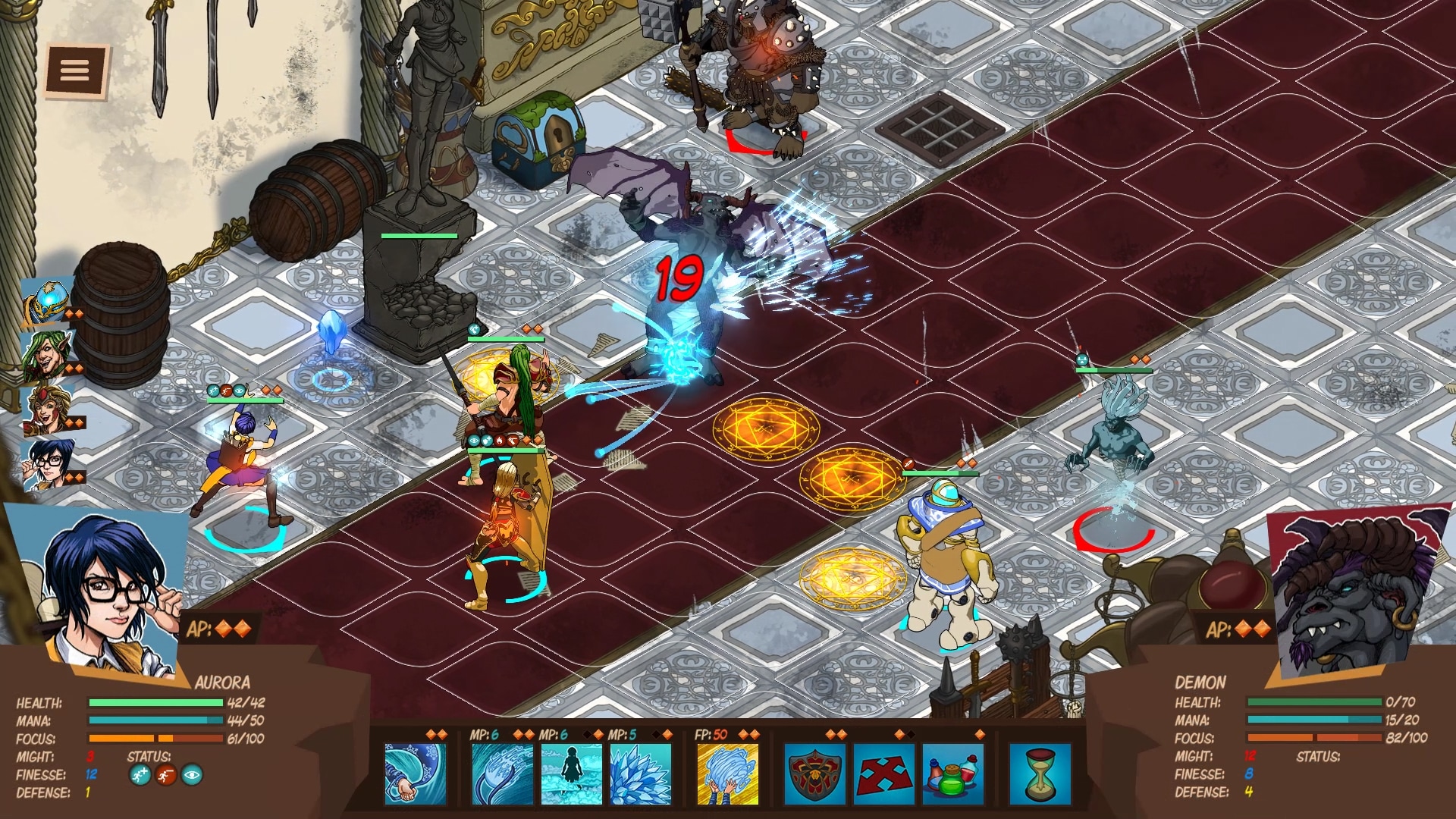
Tactically Mobile
Reverie Knights Tactics has a lot of very solid, very good elements to its overall package. While playing though, something consistently kept niggling away at me about the minimal layers it seemed to have. I’ve mentioned it a couple of times already – the ever-present feeling that this could quite easily be a mobile title, albeit an excellent one.
See, when entering a battle there’s optional mini-objectives like hitting 4 enemies with an environmental hazard or collecting every chest. Completing these while also successfully felling your opponents nets you 1-3 stars. Every sub-objective offering extra XP and cogni as reward. The problem is that some of these tasks are so arduous and require so much unnecessary fabrication to achieve, it feels intentionally designed to throttle your progress if you’re looking for a full completionist playthrough, akin to what many mobile titles do. There’s even an achievement tied to it and I can imagine that had I cared at all about achievements, it would have soured my experience considerably.
You can retry battles immediately after finishing them, but then you’re locked out from retrying them once you proceed. Couple this with the limited customisation options and the abusable strategies that are available past a certain point, it abruptly becomes transparent that there’s deeper systems or mechanics missing to elevate the game into a truly great tactics title.
Far from me saying that this game is only a mobile game or is anything less than good – it’s not, it’s great fun in a lot of places – it just has that underlying aura of a title that’s been slightly held back. Maybe it was budgetary, experience or just lack of further time, but I came out of Reverie Knights surprisingly satisfied yet oxymoronically a little underwhelmed. There’s clear scope for a sequel based on the story’s events, so perhaps with the next iteration these minor issues can be addressed and the formula further expanded upon, because the basic foundation is strong indeed.
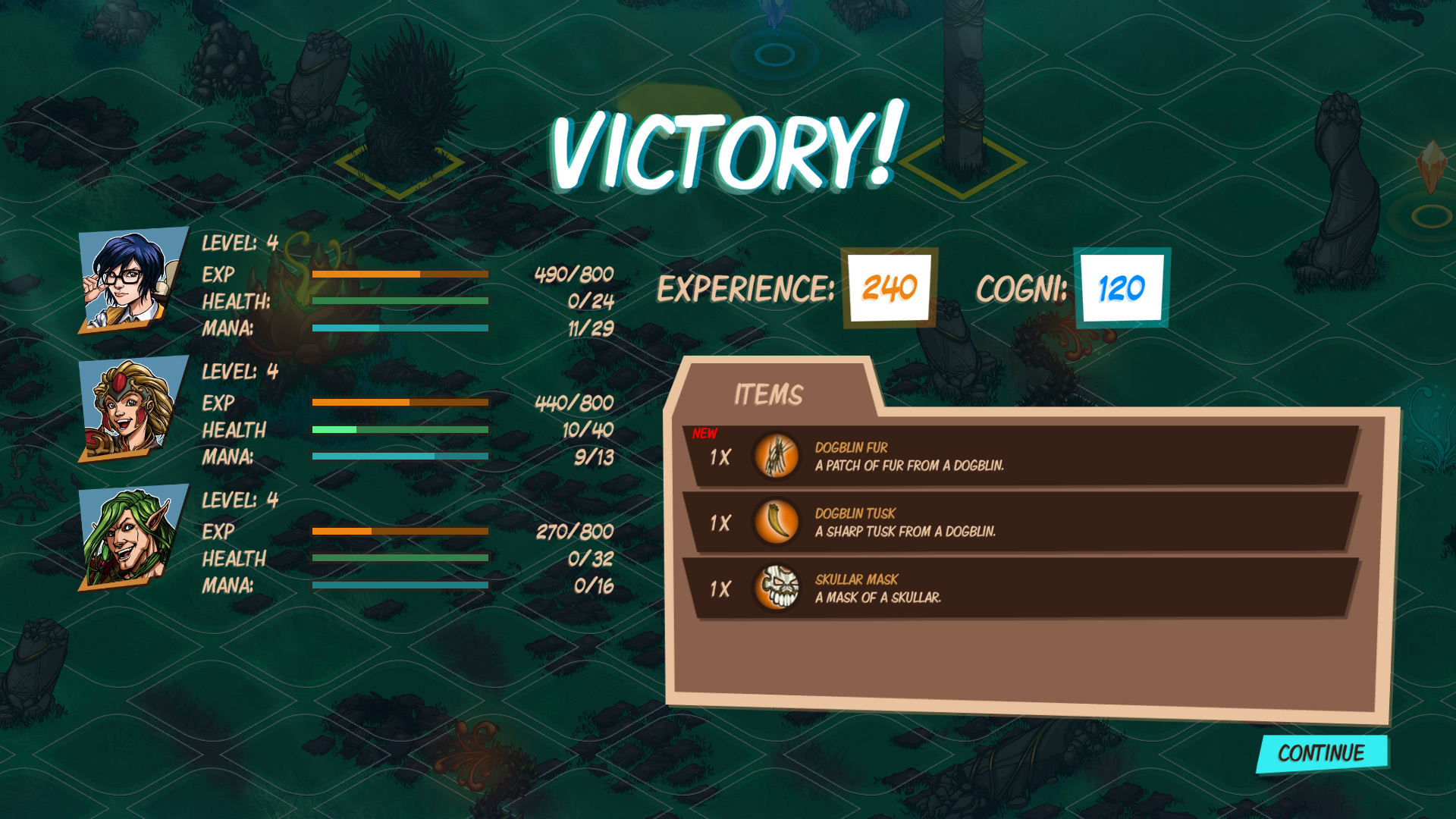
Cheerful Musing
You could certainly do a lot worse than Reverie Knights Tactics and in truth, my personal experience of playing the game was on the whole very good. It ran perfectly (minus a weird delay when doing a team attack with more than 2 people), has a solid and strategic combat system, a decent story and varied mission setups to overcome.
There’s an unfortunate sense that maybe Reverie could have done with just a touch more depth to each area to truly hit its potential and reach greatness instead of “goodness”, but I can’t fault too much what’s here. I enjoyed my 10 hours ripping through hobgoblins, demons and all sorts of feral beasts so I’d recommend giving it a try if you’re into Tactics and isometric grid type games. You’ll likely struggle in the initial hours on the normal difficulty (the only alternative is easy, no higher options), but once you find your feet you’ll be in a one-way trance to the end.
Plus, you’ll hopefully have learnt a new word’s meaning, which is always a bonus.
A turn-based strategy game with remarkably solid, pretty and entertaining foundations, Reverie Knights Tactics is a good if unspectacular entry into the genre. Its gameplay and design could have benefitted from additional depth, but this compact package offers a pleasantly enjoyable romp with even more hope for future entries. Completely usurp other tactics games it likely won’t, but there’s enough here to have you entering your own reverie in this tale.

Reverie Knights Tactics is available now on Xbox One (review version), PS4, Nintendo Switch, PC and Mac.
Developer: 40 Giants Entertainment
Publisher: 1C Publishing
Disclaimer: In order to complete this review, we were provided with a promotional copy of the game. For our full review policy, please go here.
If you enjoyed this article or any more of our content, please consider our Patreon.
Make sure to follow Finger Guns on our social channels –Twitter, Facebook, Twitch, Spotify or Apple Podcasts – to keep up to date on our news, reviews and features.
